Reunion Island has a lot on offer — both above and at sea level. Kalpana Sunder lazes by a sandy beach, treks to a large active volcano and gets a bird’s eye view of the island from a helicopter
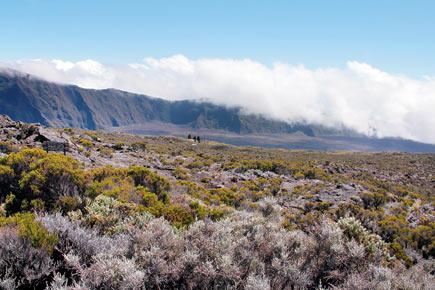
Piton de la Fournaise
Réunion Island
Best time to visit: May to November
You need: 4 days
ADVERTISEMENT
From the skies, Réunion Island looks like something out of Jurassic Park. Vast expanses of sugarcane fields give the island an emerald green tinge and mountain tops are arranged to resemble a huge amphitheatre. To see this, and the island’s sepia-toned craggy volcanic outcrops, you have to squint through a veil of fluffy, candy floss-like clouds. Although the island is 10,000km away from France, Reunion is an overseas department of France, making it an anomaly. Surrounded by the Indian Ocean, the island is also a short distance away from Mauritius.

The view while walking towards the active volcano, Piton de la Fournaise
Reunion Island was first discovered by the Portuguese, although its earliest settlers were the French. They named the island ‘Ile Bourbon’ and went on to have a lasting influence on the island’s food and architecture. Interestingly, one third of the island’s population has Indian roots and with the Chinese, Creoles, Tamils, Arabs and Europeans making up the rest of the population, the island is a true melting pot.
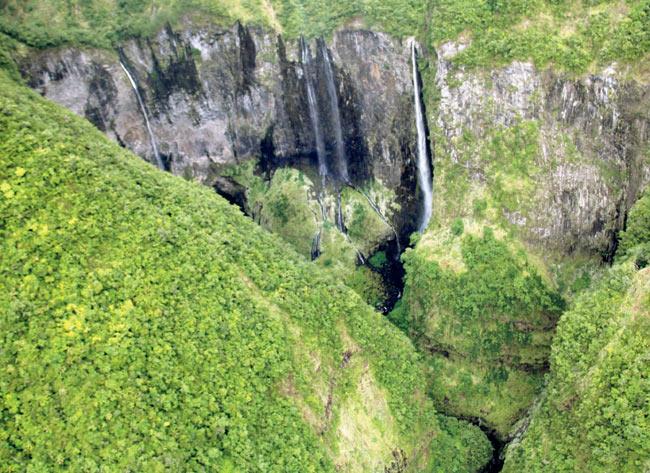
A view of a ravine from a helicopter
Reaching into a volcano
As we check into our hotel on the west coast, Lux Ile de la Réunion, we realise that we have entered a different world of white and gray clapboard constructions, sprawling lawns and endless stretches of coral beach, where locals kayak and snorkel. Two popular attractions of the island are the extinct volcano, Piton des Neiges, and a large active volcano called the Piton de la Fournaise. To visit the latter, I drive through lush pastures dotted with cows. I reach the base of the volcano from where one can trek, through paths shrouded in mist, to the rim of the crater. Although I do not make it to the crater due to a lack of time, I trek for a while and reach a point from where I can look down at the barren land, which resembles a tray of over-baked brownies. I am reassured by Sully Chaffres, my affable guide, that the volcano is closely monitored by an observatory at all times.
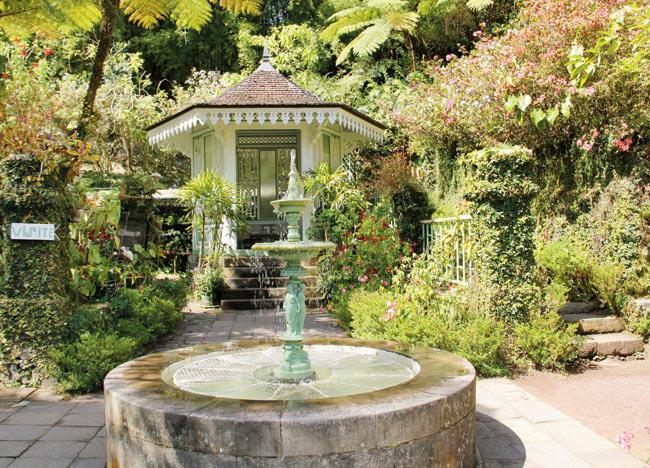
Monsieur Folio’s 18th century house in Hell Bourg
Both black volcanic pebbles and golden sand form the shores of the island’s beaches. However, one must always remember to look out for sign boards that warn whether swimming is allowed. I love the Boucan Canot Beach, surrounded by palm and casuarinas trees. The open-air cafes and locals, who spend time sunbathing, playing volleyball or reading, lend the place a Mediterranean vibe. With flowering jacarandas, aromatic ylang ylang, bougainvillea in a thousand shades and Japanese pine and ferns, the island is perhaps the closest one can ever come to seeing the Garden of Eden. Vanilla pods are one of the island’s most important cash crops. Edmond Albius, a young slave with a passion for botany, found out how to artificially pollinate plants and, thus, paved the way for the island’s lucrative vanilla industry to take off.
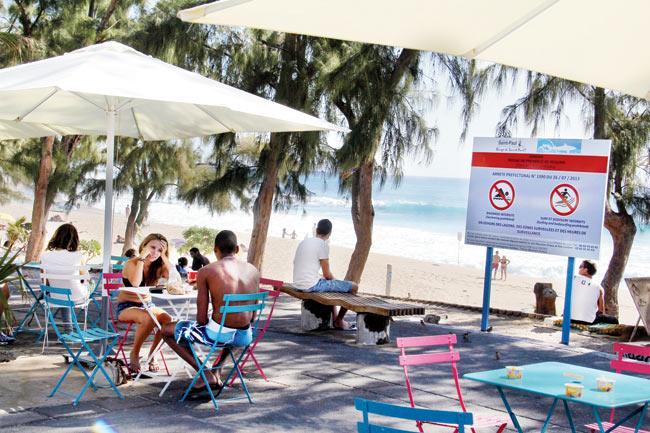
Locals relax by the popular Boucan Canot beach
History of slavery
Back in the island, I see distinctive houses called ‘Case Creole’ in happy, bright colours, complete with picket fences, open verandahs), decorative carvings called lambrequins under the four-sided traditional roof, windows outlined by lace curtains, and gardens in full bloom. Every corner of the island resonates with history: the inaccessible cirques, for instance, were where slaves hid after escaping from coffee and sugarcane plantations owned by brutal landlords. For more than 150 years, slavery took an ugly toll on Réunion Island and while we are at the capital, St Denis, Sully tells me that the islanders celebrate December 2 as the National Day.
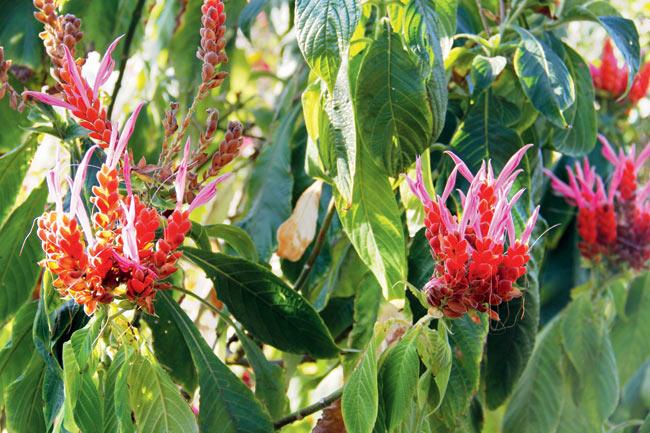
Exotic flowers at the lush garden at Domaine du Café Grill
The cirques are essentially collapsed calderas of volcanoes, with villages clinging to razorback ridges. My favourite is the drive to the Cirque of Salazie, studded with green peaks, waterfalls, examples of Creole architecture in the form of small towns, and simple churches. In the pretty town of Hell Bourg, we take a tour of the 18th century home, Maison Folio, which is owned by a local Creole family and is now open to tourists. The owner, Monsieur Folio, introduces us to local vegetables and herbs such as the choux choux and vetiver, and takes us through an old shed converted into a museum, complete wtih antique items like ovens, iron boxes and kitchen utensils. The garden is home to medicinal plants, geraniums and palms and we are wowed by the interiors, which include sepia prints of antique Réunion furniture and a wrought- iron bed with a lace canopy from the East India Company.
One of the biggest draws of the island is the water sports on offer, such as abseiling down waterfalls and paragliding to name a few. My pick is a helicopter ride over the Cirques. It takes me above the cirques, and for a heart-stopping moment, swoops into a ravine streaked with waterfalls. This thrilling experience will remain etched in my memory for years.
Did you know?
Le Grand Raid, a local marathon held every October, attracts 2,000 competitors who run for 163 km across the island and climb great altitudes
Fact File
How to reach: Fly Air Mauritius from major metros such as Chennai, Bangalore, Delhi and Mumbai to Mauritius and connect to Réunion Island.
Where to stay: Lux Ile de la Reunion is the most luxurious option bordering a coral lagoon. Log on to https://www.luxresorts.com; other good options are Palm Hotel and Spa, Grand Anse and Hotel le Boucan Canot on the BoucanCanot Beach.
What to do: Trekking, hiking, canyoning, paragliding, helicopter rides and tours to see Creole architecture.
What to eat: Creole specialities such as rice and cari, rougaille, Various brèdes include chayote leaves, Chinese cabbage and watercress. Rhum arrangés is a local specialty, where herbs, spices and fruits are added to white rum.
What to shop: Bags, flavoured rum, fresh vanilla and Creole dolls
 Subscribe today by clicking the link and stay updated with the latest news!" Click here!
Subscribe today by clicking the link and stay updated with the latest news!" Click here!






